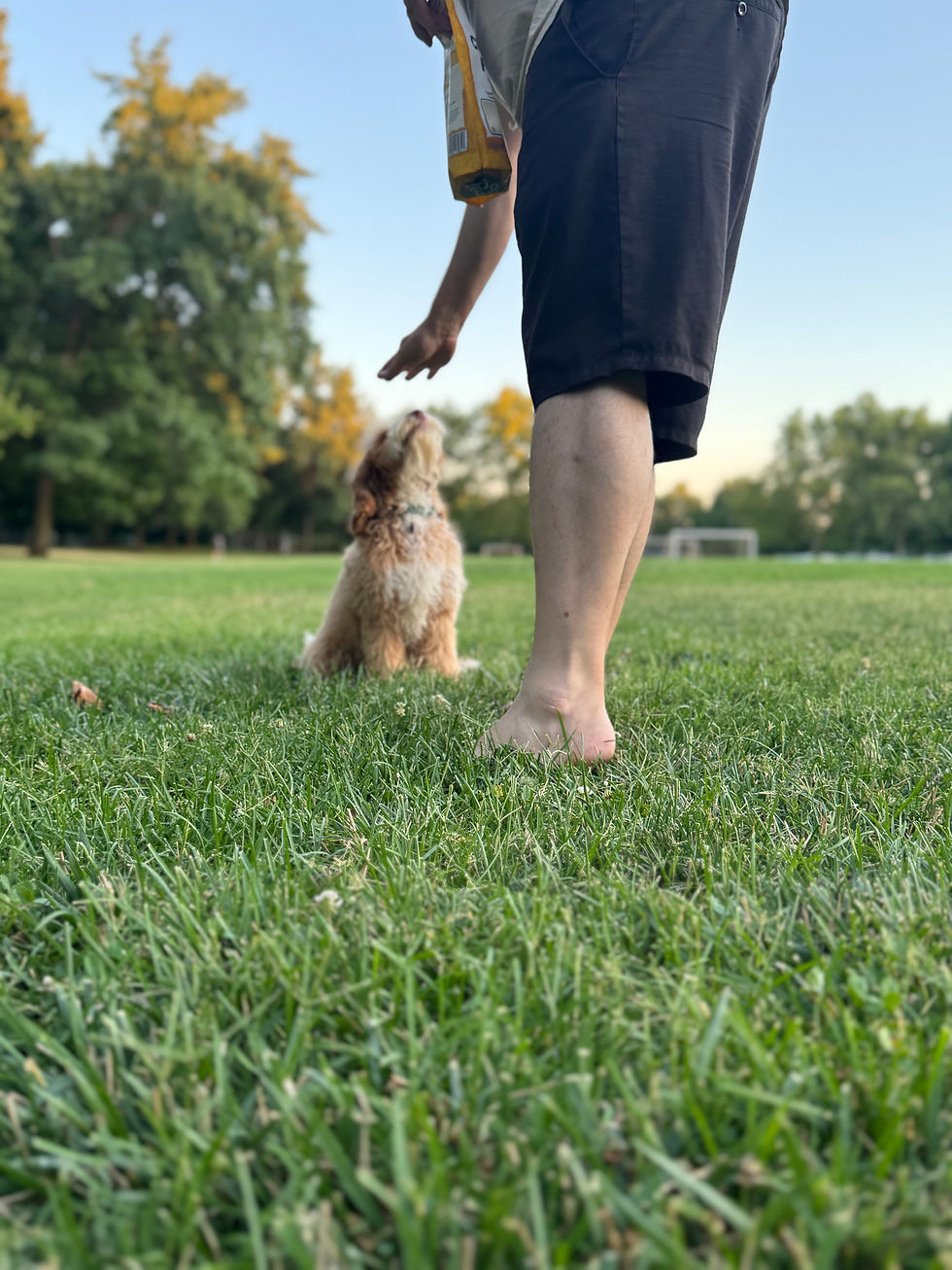Why Australian Labradoodles are Perfect for Families
- Katie Gorman
- Jun 26, 2025
- 4 min read
If you're looking for a family-friendly dog that can seamlessly fit into your lifestyle, you might want to consider the Australian Labradoodle. This breed has been gaining popularity for a good reason. Their unique traits make them ideal companions for families, large or small. In this article, we will explore the characteristics that make Australian Labradoodles so special and discuss why they are a perfect fit for family life.
Australian Labradoodle Traits
Australian Labradoodles are renowned for their friendly demeanor, intelligence, and versatility. These dogs were initially bred as hypoallergenic assistance dogs, combining the best traits of three popular breeds: the Labrador Retriever, the Poodle, and the Cocker Spaniel.
One notable trait is their friendly and social nature. They are known to get along well with children and other pets, making them an excellent addition to any household. According to a study conducted by the American Kennel Club, families with children who own dogs experience improved emotional well-being and a stronger bond as a family unit.
Another key trait is their intelligence. Australian Labradoodles tend to be quick learners, requiring minimal training to master commands and behaviors. This makes them an ideal choice for families, as they can quickly adapt to new routines or household rules.

The Perfect Family Companion
When it comes to choosing a family dog, the Australian Labradoodle offers several advantages. First and foremost, their temperament is ideally suited for family life. They are gentle yet exuberant, balancing energy with affection.
This breed is highly adaptable, meaning they can thrive in various living situations, whether you live in a bustling city or a quiet suburb. They enjoy both indoor cuddling and outdoor activities. Regular walks, playdates, and social outings are activities they thrive on.
Many families appreciate the loyalty that comes with having an Australian Labradoodle in their home. They have a protective nature but not to the point of being aggressive. Instead, they are more likely to alert their families of unusual occurrences while remaining friendly with guests.
What is special about an Australian Labradoodle?
One of the standout features of the Australian Labradoodle is its coat. Their wavy, soft fur is not only visually appealing but also hypoallergenic, which is perfect for families with allergies. The dog’s coat can vary in texture from one Labradoodle to another, adding uniqueness to each dog. Regular grooming is necessary to keep their coat healthy, but it often results in a beautiful, low-shedding companion.
Additionally, Australian Labradoodles excel in therapeutic settings. Their calm nature makes them ideal therapy dogs. Numerous organizations have recognized their potential to provide emotional support in hospitals, schools, and nursing homes. Families that have an Australian Labradoodle not only gain a pet but also a companion that can contribute positively to their emotional health.

Activity Requirements
Every family has its activity style, and Australian Labradoodles fit in seamlessly. They require regular exercise, typically a minimum of 30 minutes a day, but they thrive on more if given the chance. Families that enjoy outdoor adventures, such as hiking, running, or long walks, will find their Australian Labradoodle to be an enthusiastic partner.
Providing mental stimulation is equally vital. These dogs love to engage in interactive games, puzzle toys, and obedience training. Engaging the dog's brain keeps them happy and fulfilled, which can reduce undesirable behaviors often born from boredom.
Establishing a routine that incorporates both physical and mental activities will contribute to a well-behaved Australian Labradoodle. Families should take advantage of their intelligence by incorporating training sessions into daily routines, reinforcing good behavior and ensuring a solid bond between pet and family.
Health and Well-being
While no breed is completely free from health issues, Australian Labradoodles are generally considered to be a healthy breed. Responsible breeders prioritize the health of their dogs, meaning that potential health risks are often minimized. Regular vet check-ups and a balanced diet play an essential role in maintaining a healthy lifestyle for your Australian Labradoodle.
Common health considerations include hip dysplasia and eye issues. Research shows that early detection and proper care can lead to a long, healthy life. The average lifespan of an Australian Labradoodle ranges from 12 to 14 years, giving families many years to make lasting memories with their furry friend.
When considering an Australian Labradoodle, prospective owners should focus on reputable breeders who conduct health screenings and follow ethical breeding practices. This way, families can be assured they are bringing a healthy pet into their home.

Bringing an Australian Labradoodle into Your Family
If you believe that an Australian Labradoodle might be the perfect fit for your family, consider the following actionable recommendations:
Research Breeders: Look for reputable breeders who prioritize health and temperament. Websites such as Shasta Royal Monroe Puppies provide a wealth of resources for finding reliable sources.
Visit before Committing: Spend time with the prospective puppy or dog. Make sure that the dog’s personality aligns with your family's lifestyle.
Prepare Your Home: Create a space that accommodates your new dog. Have a cozy bed, toys, and essential supplies ready before bringing your Australian Labradoodle home.
Establish a Routine: Discuss schedules within your family to help manage feeding, walks, and training. Consistency is crucial for a successful transition.
Enroll in Training Classes: Consider joining obedience classes to reinforce good behaviors and strengthen the bond with your pet. We recomend AKC Puppy Star and we offer additonal training as well.
By following these steps, families can ensure a smooth transition into pet ownership and maximize the joy their new Australian Labradoodle brings to their lives.
In summary, Australian Labradoodles make fantastic family pets due to their friendly nature, intelligence, and adaptability. By prioritizing exercise and training, families can enjoy the many benefits of having this special breed as part of their household. Consider bringing an Australian Labradoodle into your home today for a loving companion that will enhance family life for years to come.




Comments